by Julie Snell and Michele Adams
Albert Greenfield Elementary School in Philadelphia was the first school in the district to implement a “green schoolyard.” School stakeholders, including alumni, parents, and teachers, partnered with Philadelphia Water Department, The Community Design Collaborative, and The Pennsylvania Horticultural Society to form the Greening Greenfield Committee, and together they created a new vision of schoolyards. Their efforts transformed the mixed-use asphalt schoolyard into an urban oasis featuring a woodland garden in place of parked cars and dumpsters.
Utilizing green stormwater infrastructure (GSI) systems, the site was redesigned to manage stormwater on site, allowing infiltration via porous pavement, permeable play surface and a raingarden. This project was an early example of how public landscapes in the city can offer significant connections to the natural world and become benefits for students and the community. Greenfield was intended to be a model of possibilities for other schoolyards and in 2013 was awarded the Green Ribbon School Award from the U.S. Department of Education.
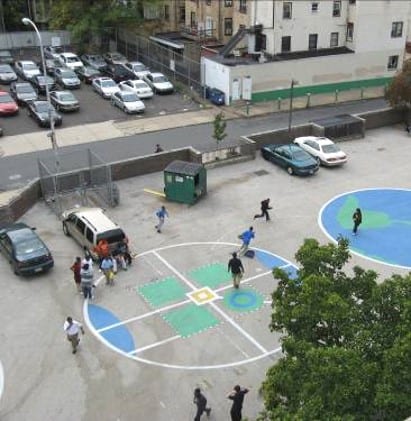
Greenfield Elementary School, located in Philadelphia, is an urban school that ten years ago had little greenspace, no stormwater management, and cars and dumpsters in the children’s play area.
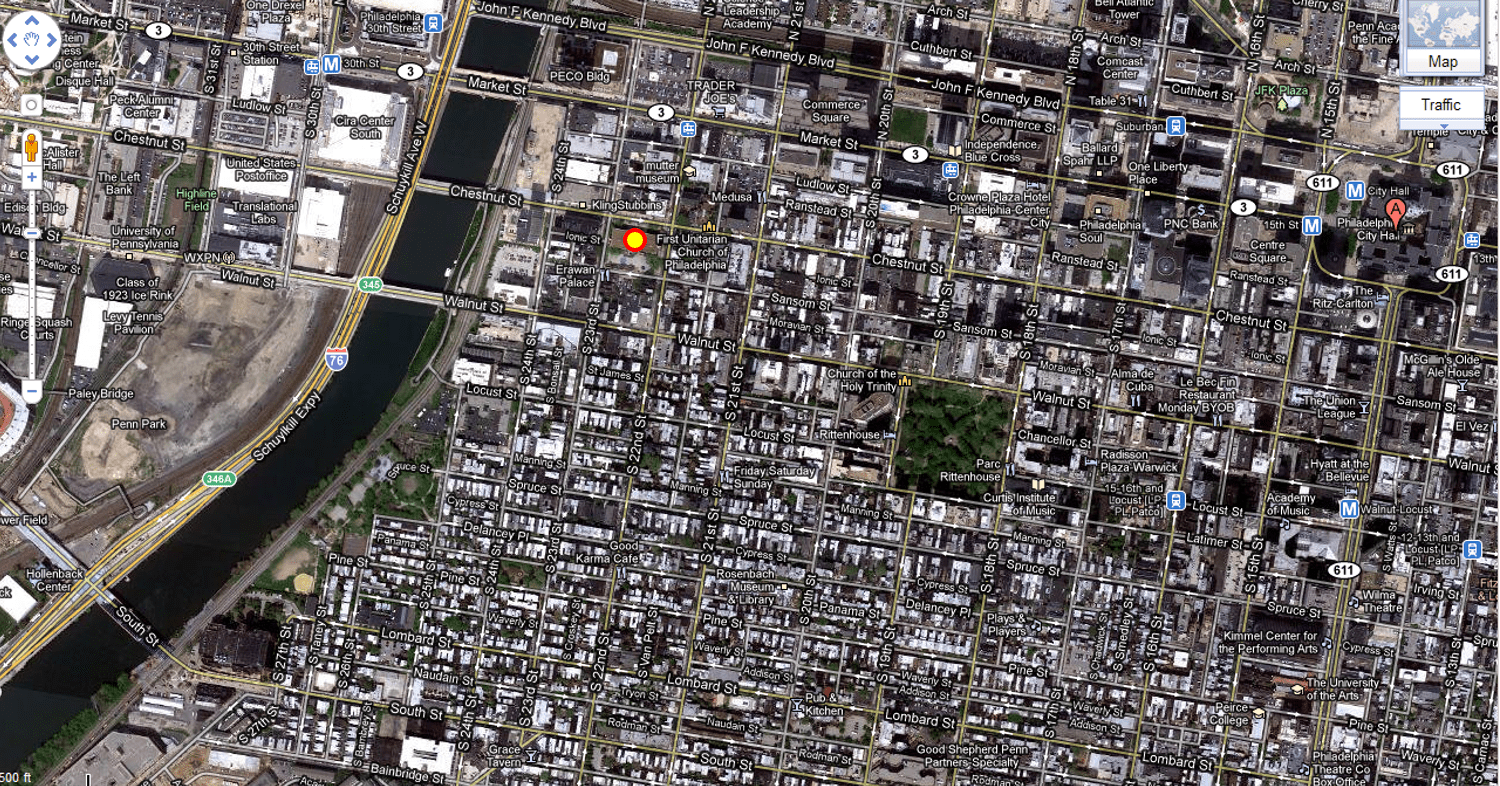
Although the school is two blocks from the river, the students had no awareness of the river and when it rained, all the combined sanitary and stormwater discharged to the river.
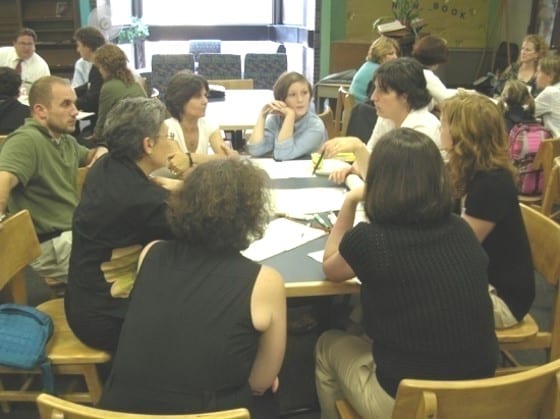
Several design charettes included students, teachers, neighbors, and city agencies. Students were given a strong voice in the design.
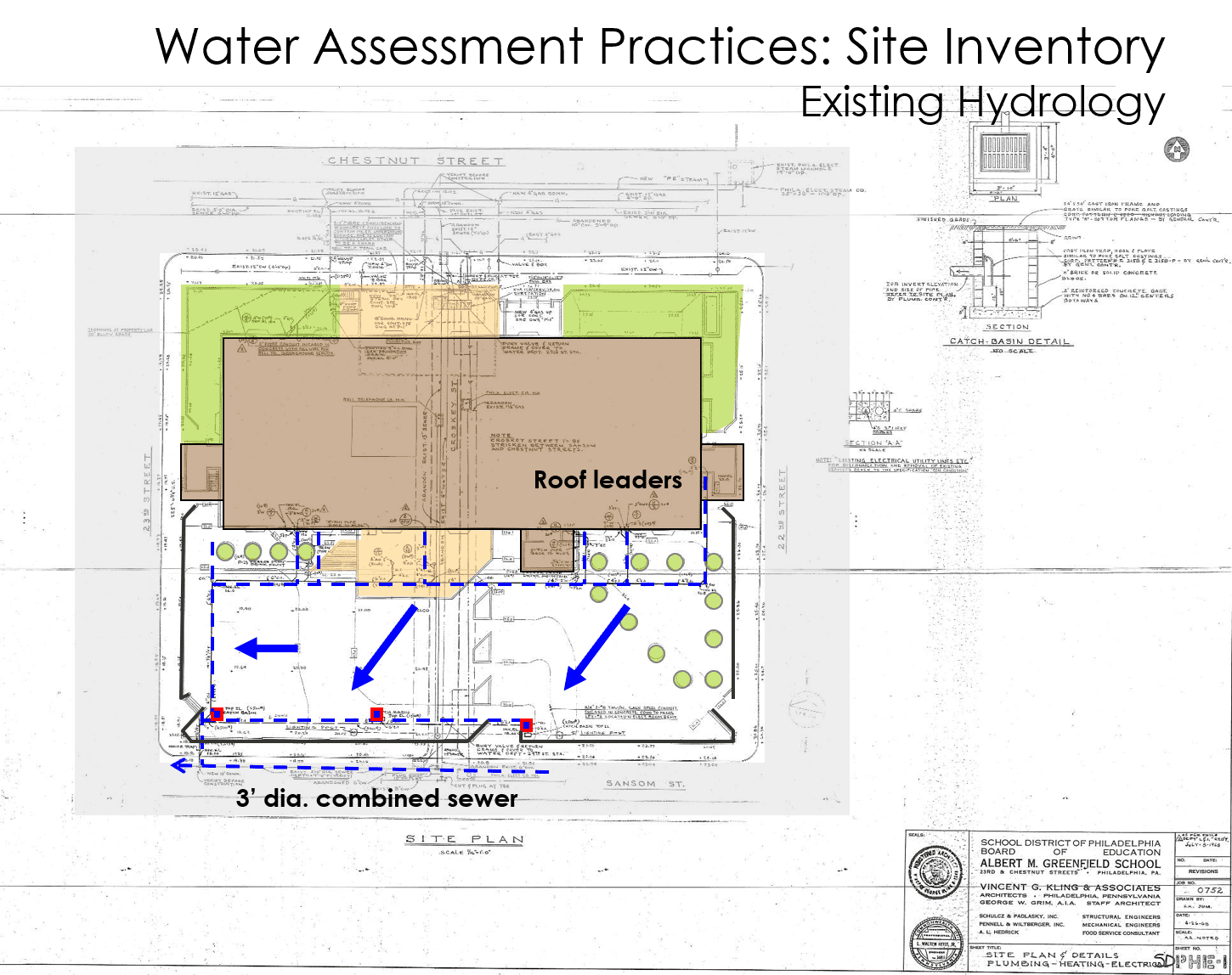
Under the existing conditions, all runoff went to a storm sewer connected to the city’s combined sanitary/storm sewer system.
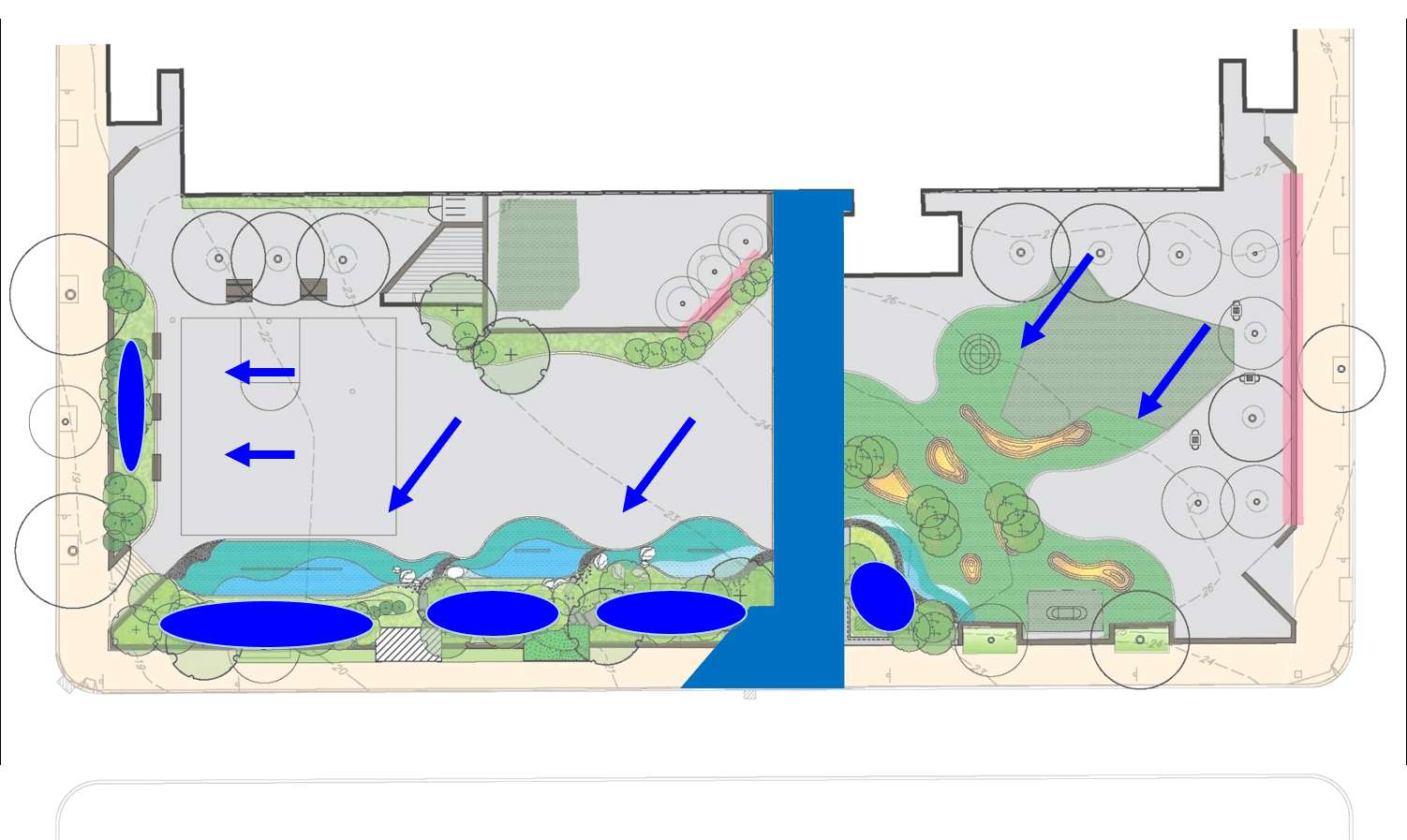
The vision was to green the schoolyard and capture the first inch of rainfall through raingardens, porous rubber play surfaces, and native plantings, providing play space, urban greening, and stormwater management.
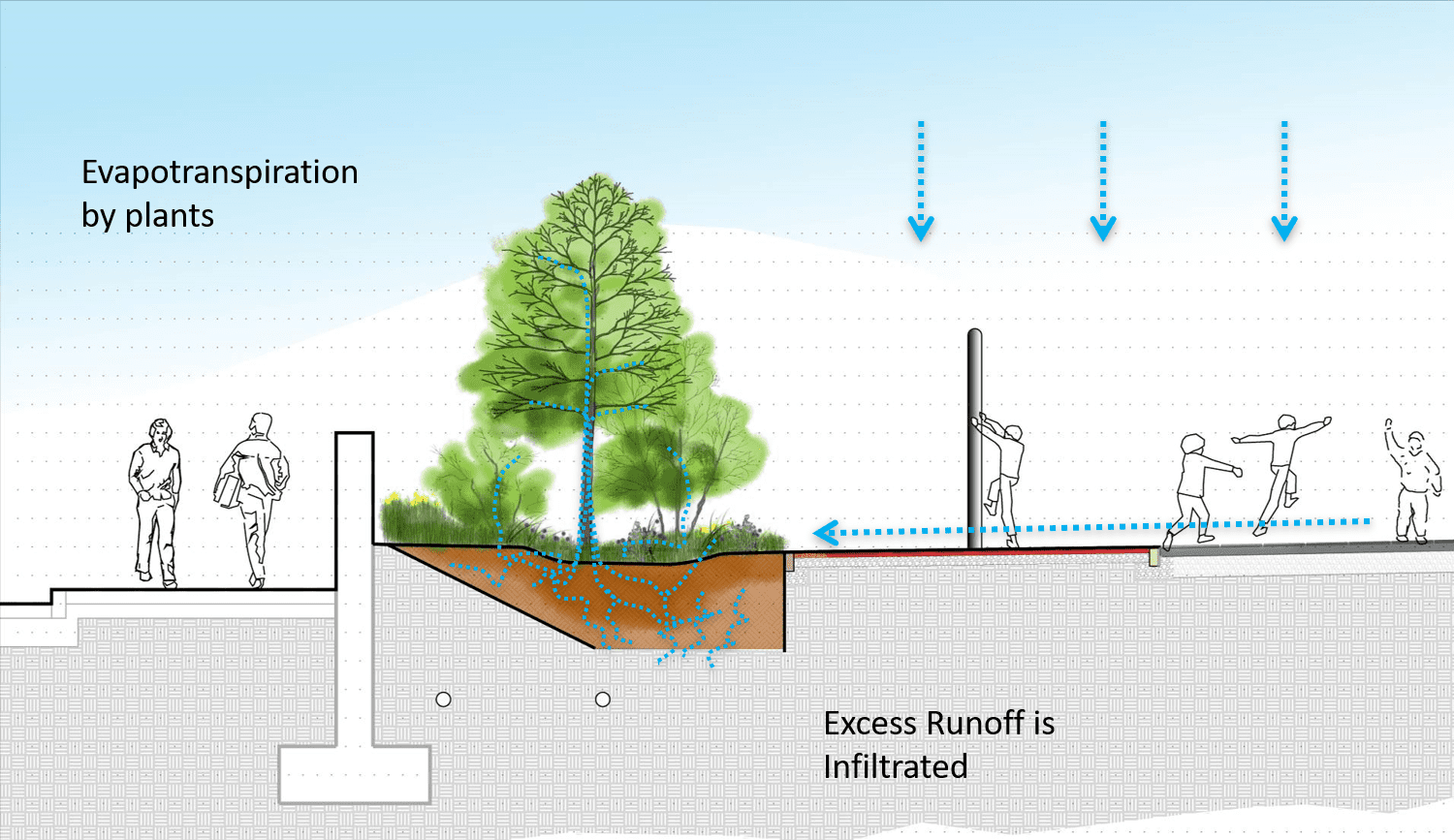
A cross-section diagram shows rain gardens and children’s climbing structure (Viridian Landscape Studio).

Before construction, the Greenfield Elementary playground is a sea of asphalt with few perimeter trees providing no shade to the schoolyard.
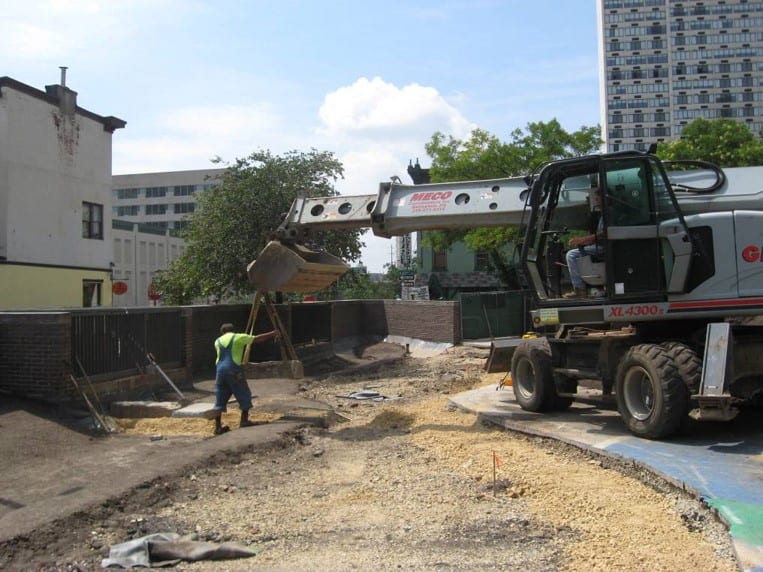
Under construction. All soils were engineered. Old granite curbs and bridge abutment stone were re-purposed.
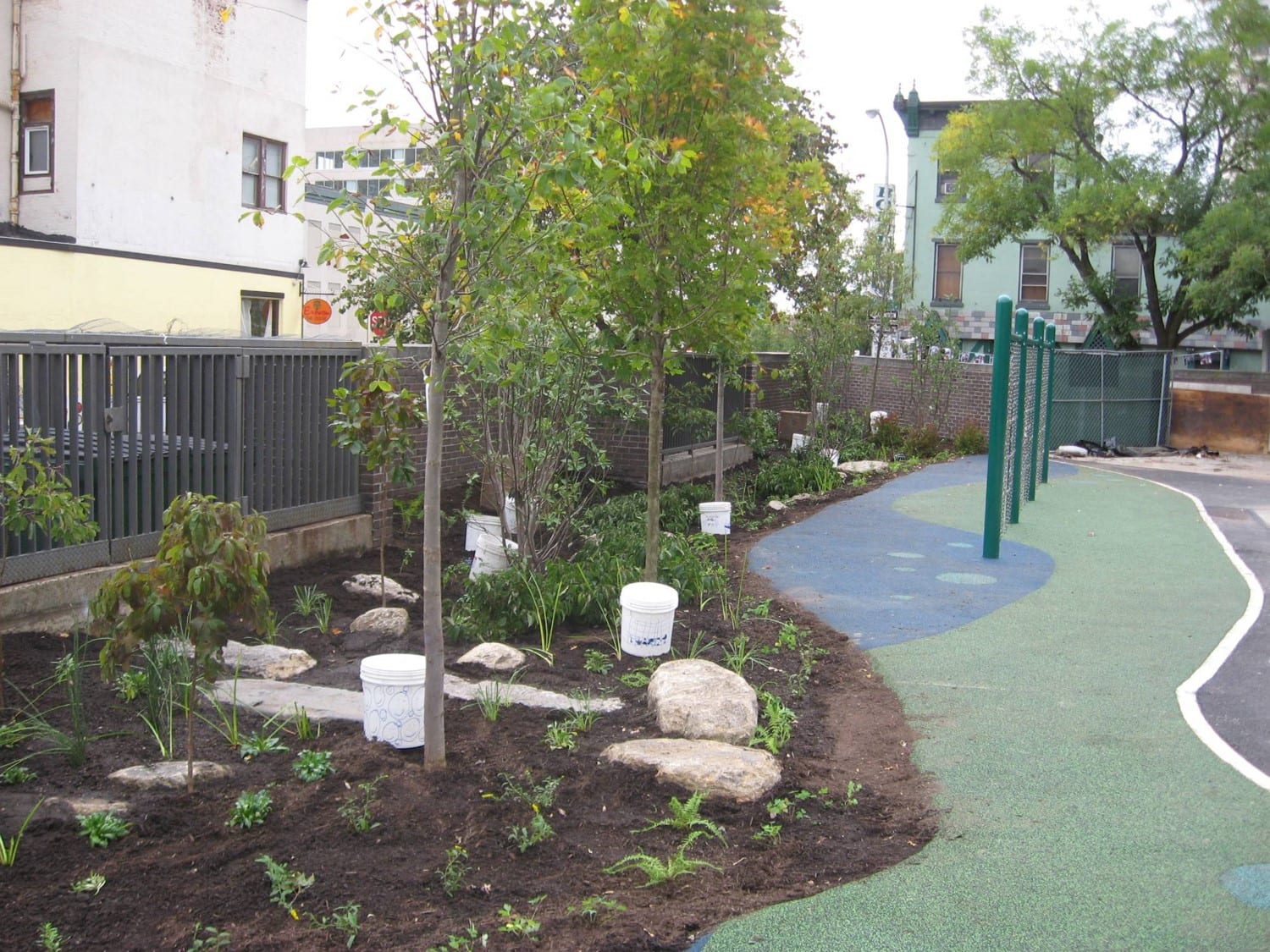
The completed rain garden shows the water buckets used by students to deeply water trees in the woodland garden.
Community Partners
Greening Greenfield Committee
Greenfield Elementary Home and School Association
The Philadelphia Water Department
The Pennsylvania Horticultural Society
The Community Design Collaborative
Design Team
Viridian Landscape Studio, Meliora Design, SMP Architects, BEAM lighting
Construction
Bittenbender Construction, MECO, and ThinkGreen
About the Author
Julie Snell, ISA, has worked closely with city agencies, corporations, volunteers, and other nonprofit entities to advise on the daily operations of the landscapes under their purview. Her work at TEND Landscape, primarily in the public realm, focuses on the bridge between design and landscape management. As founder and co-chair of the Landscape Management Forum, she has forged a partnership with landscape managers from arboreta, public gardens and campus landscape throughout the Philadelphia region. Since 2013, Julie is also an adjunct instructor for “Green vs. Gray: Improving and Sustaining Urban Ecosystems” at Temple University in the Department Landscape Architecture Speaker Biographies and Horticulture. She earned a Master’s degree in landscape architecture from the University of Pennsylvania, is a certified arborist, accredited organic land care professional, and a founding principal of TEND landscape inc.
Michele Adams, PE LEED AP, is a Water Resources Engineer and founder of Meliora Design. Her work focuses on sustainability, green infrastructure, and engineering designs informed by ecology, including many LEED and SITES certified projects. She was one of the authors of the Pennsylvania Stormwater Manual as well as the NYC High Performance Landscape Guidelines, and currently serves on the USGBC Sustainable Sites Committee (SS TAG), as well as American Rivers Science and Technical Advisory Committee. Recent projects include the Philadelphia KidZooU, Shoemaker Plaza at the University of Pennsylvania, the Stroud Water Research Environmental Education Center, and the Meadow Expansion at Longwood Gardens. Michele co-authored the Wiley textbook “Design for Flooding: Architecture, Landscape, and Urban Design for Resilience to Climate Change”, and seeks to increase awareness and planning for climate resiliency.


